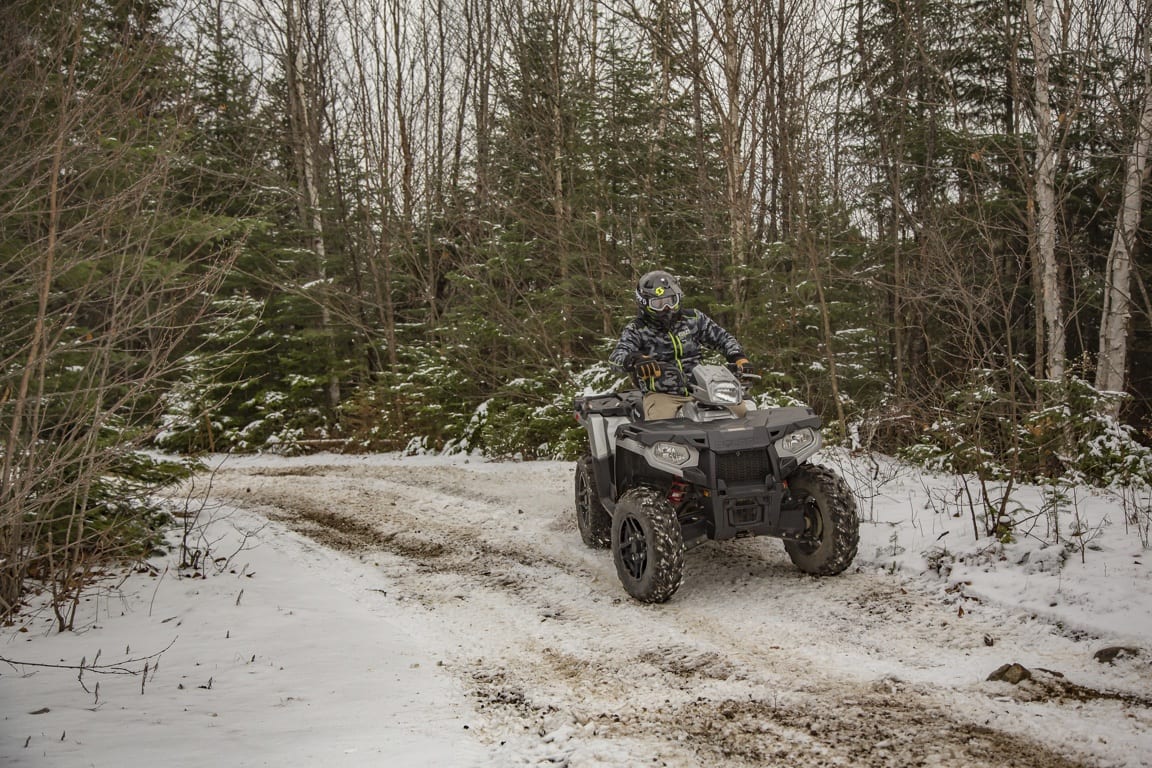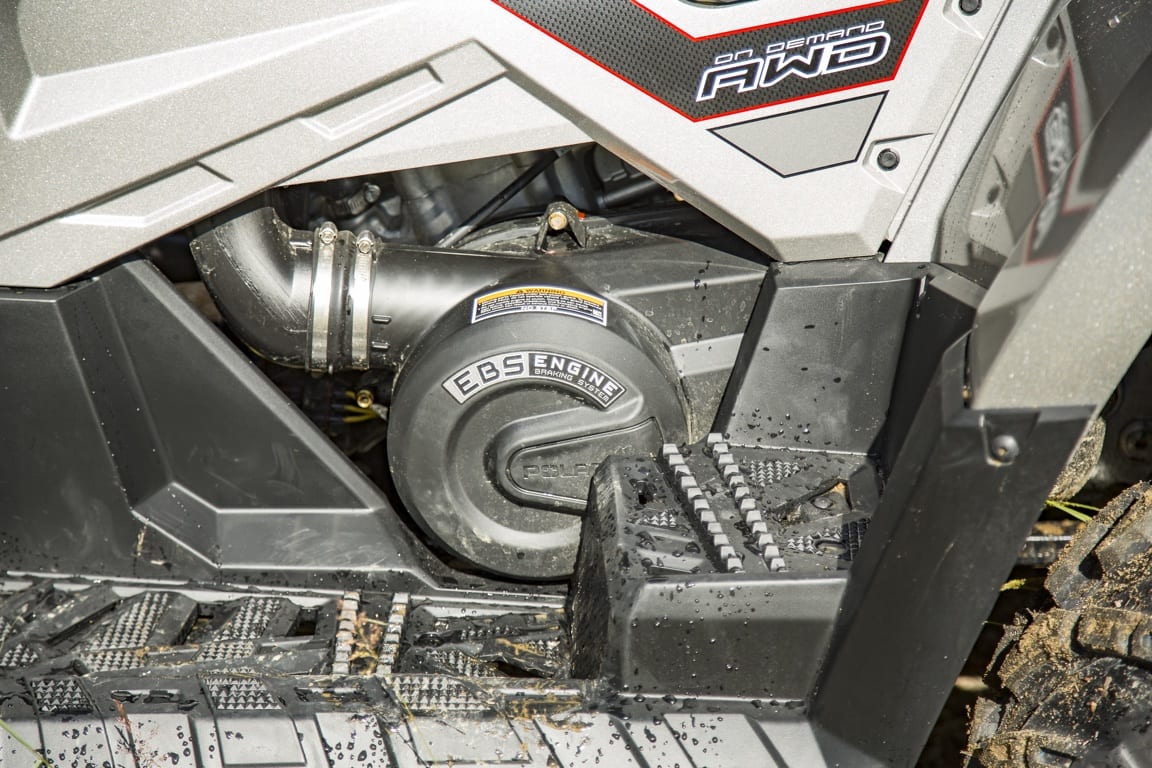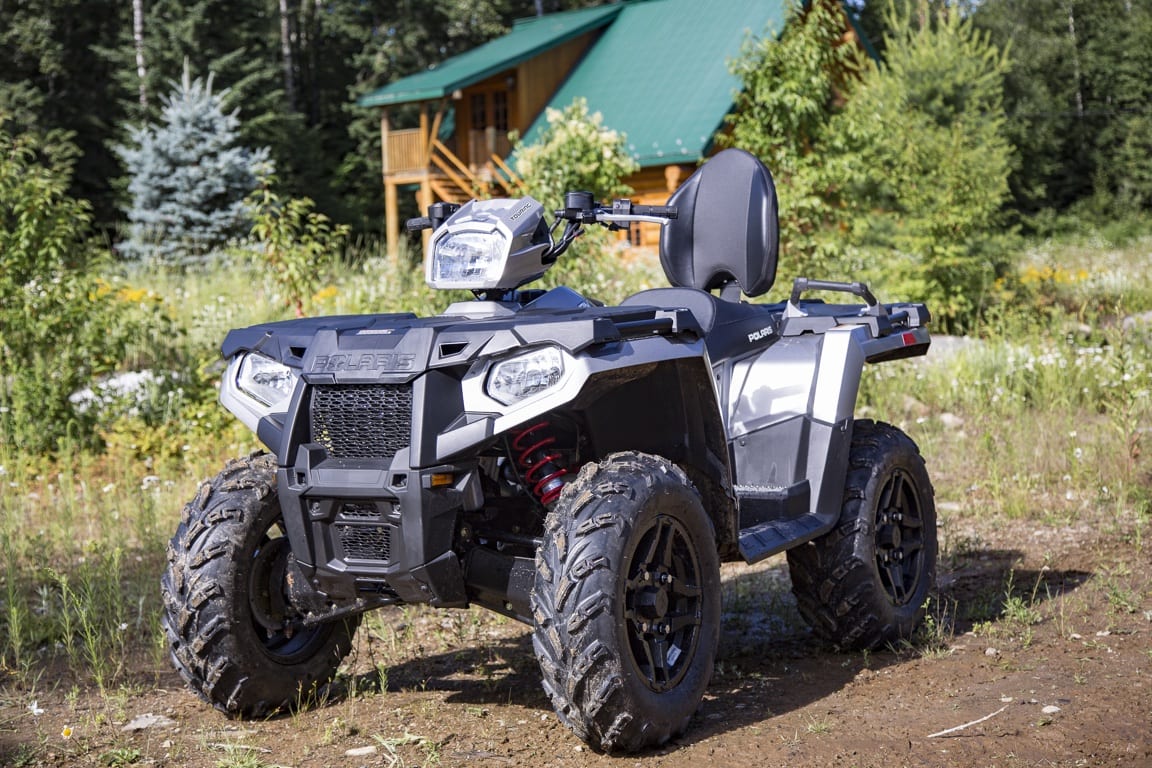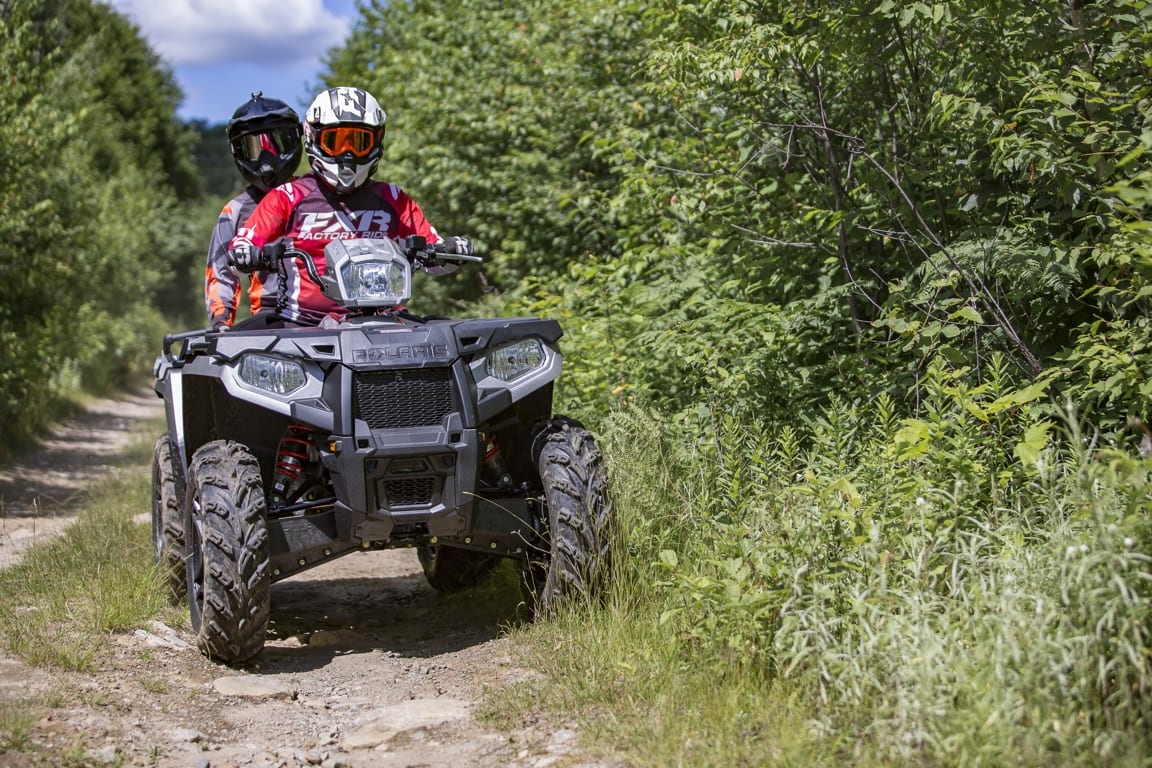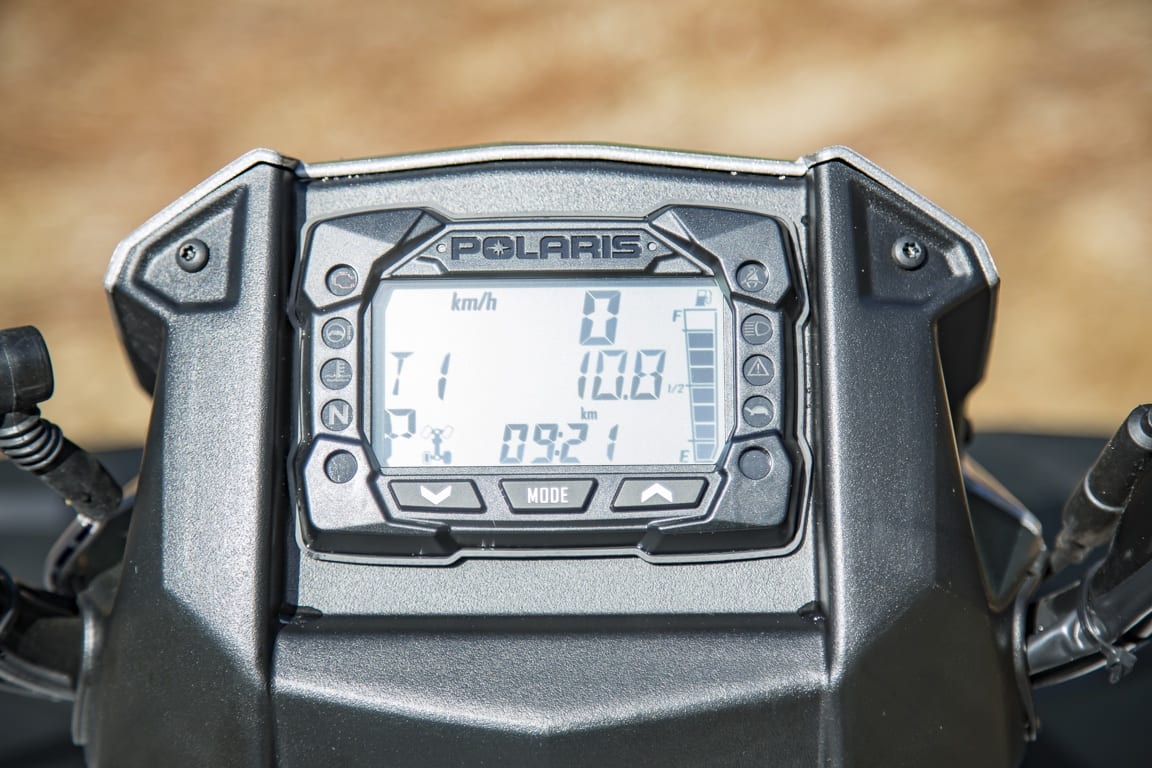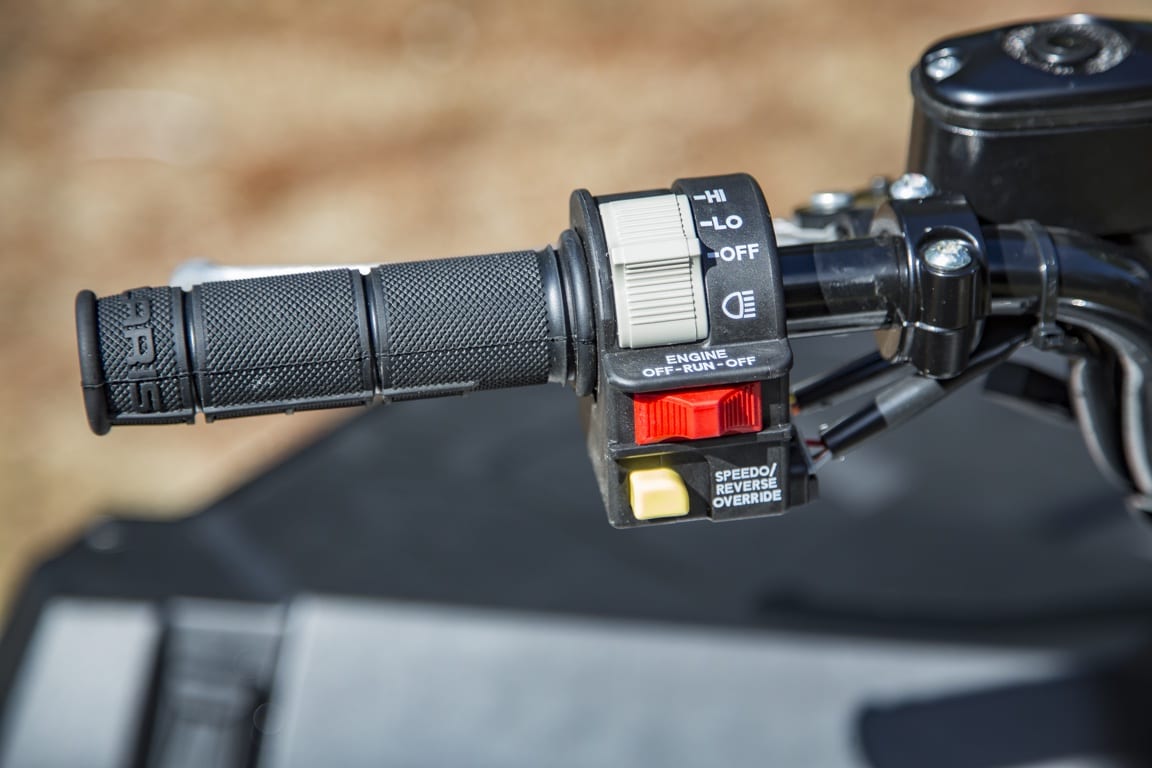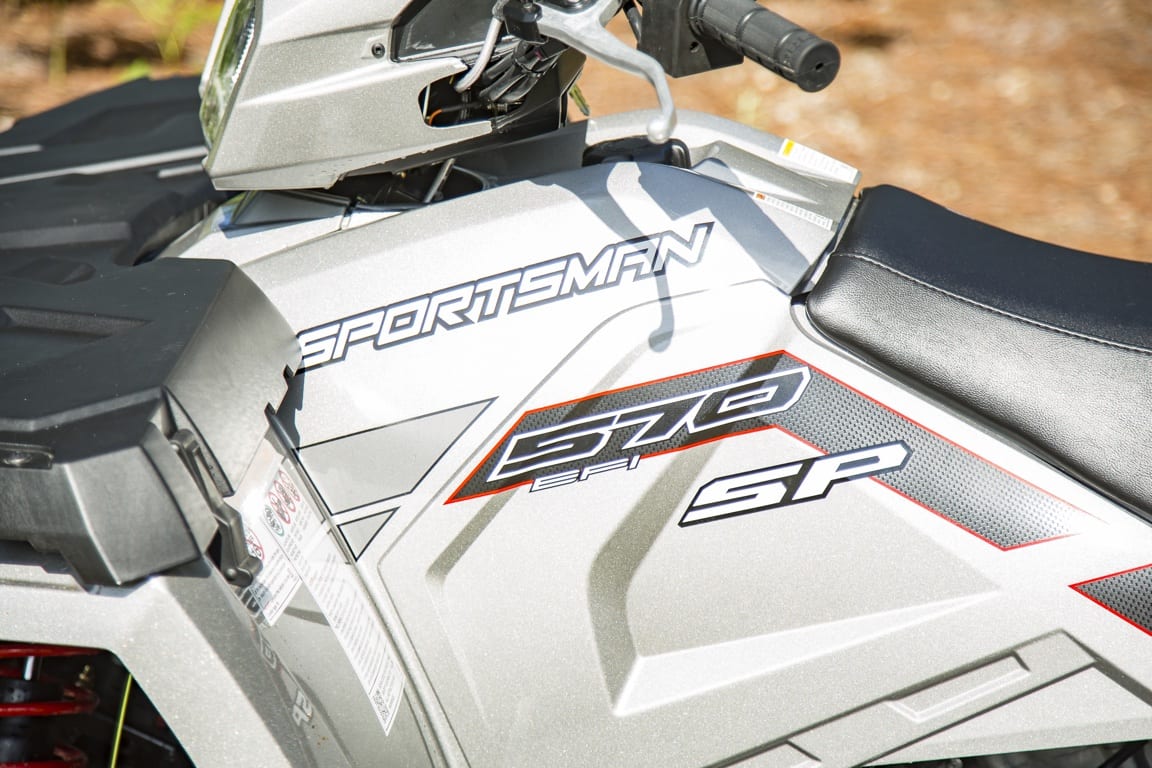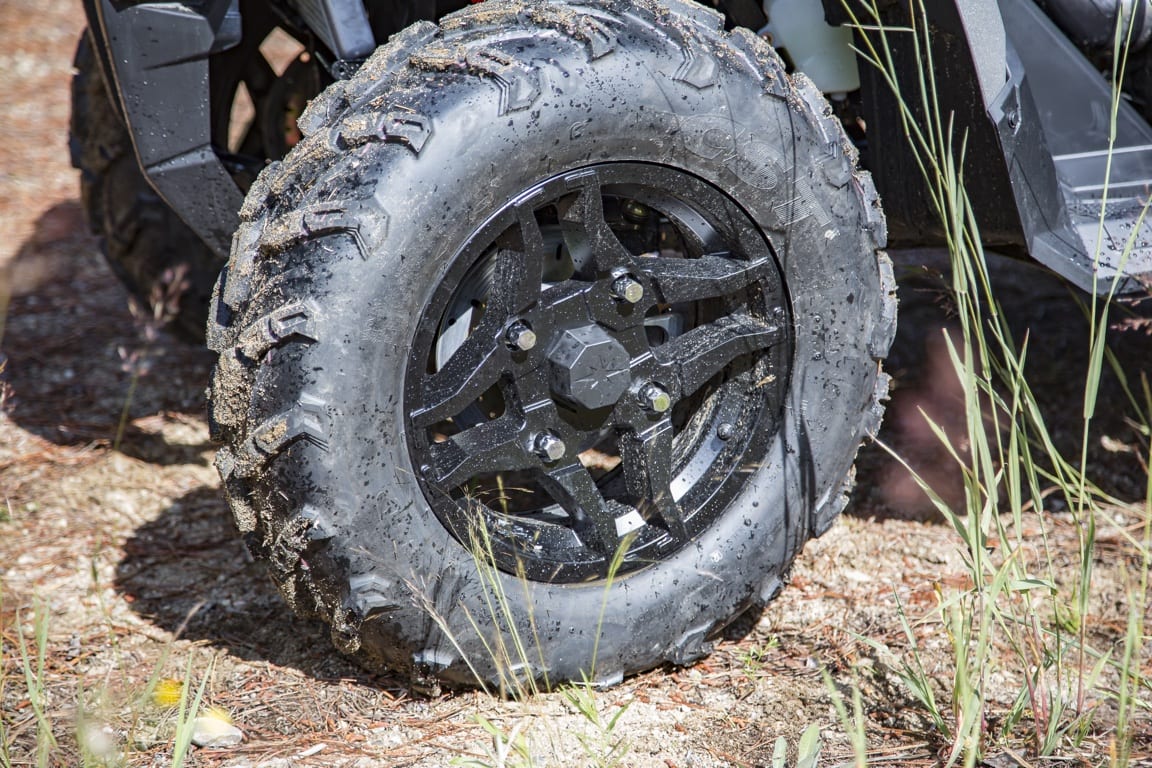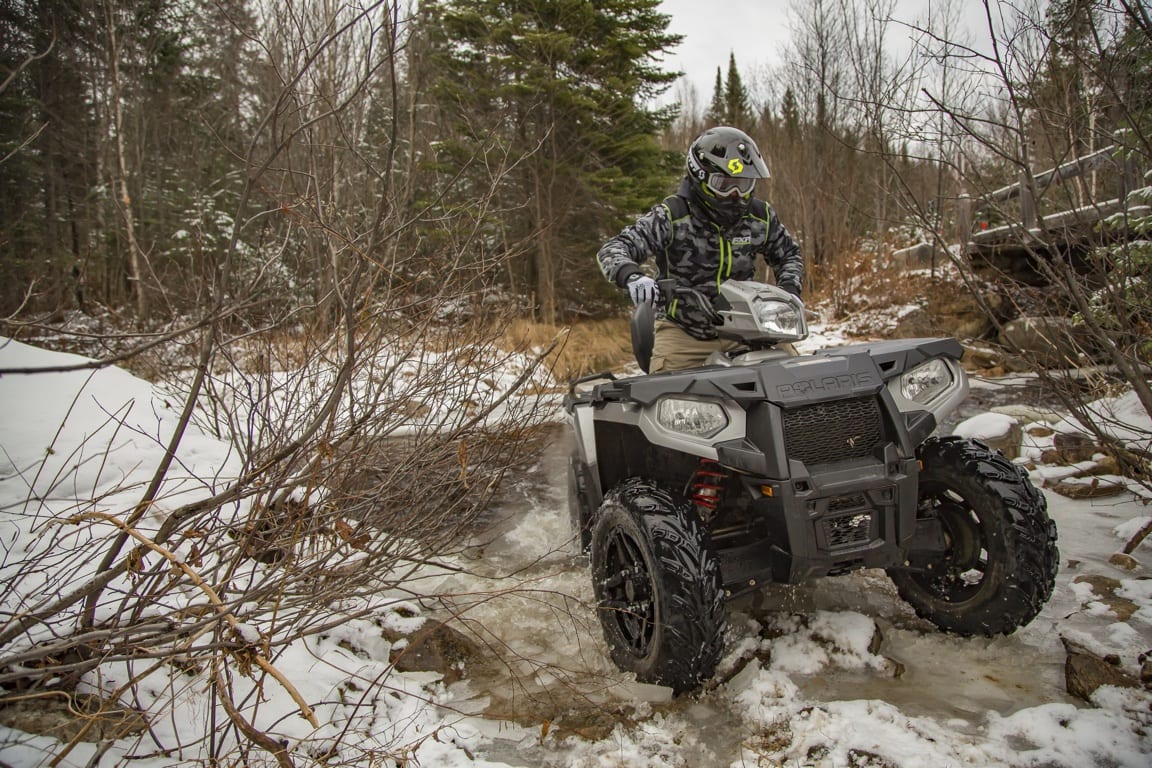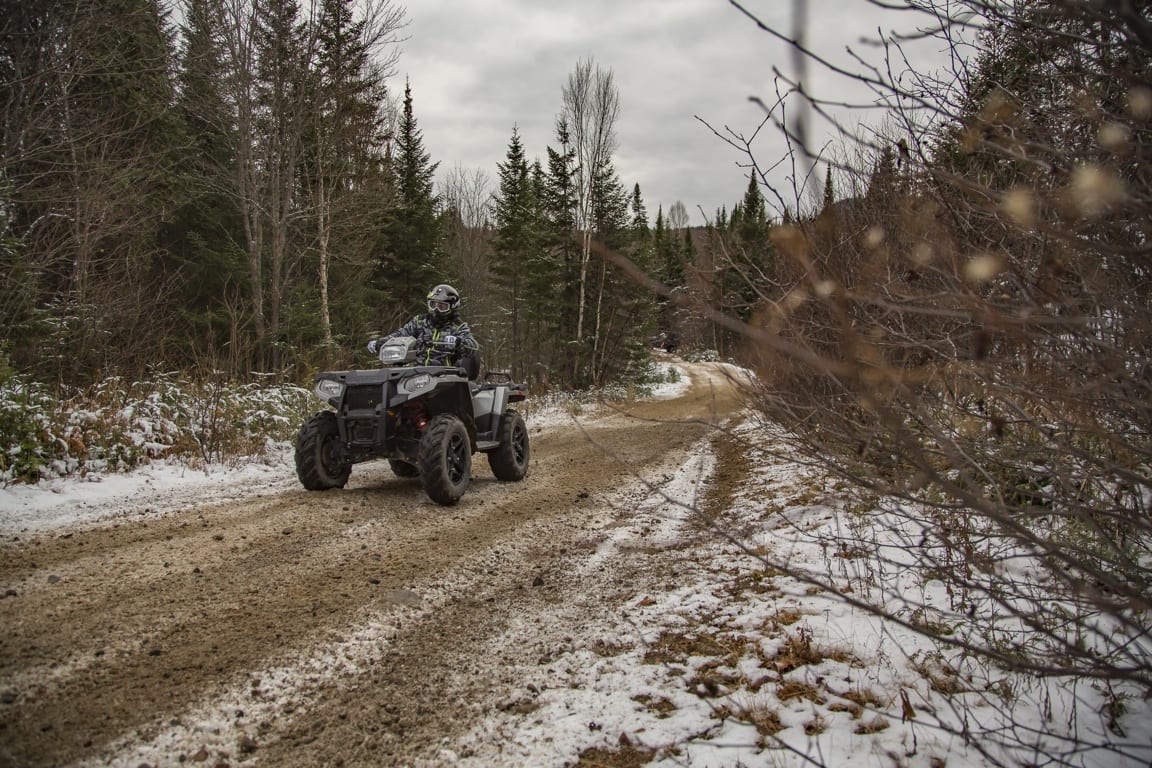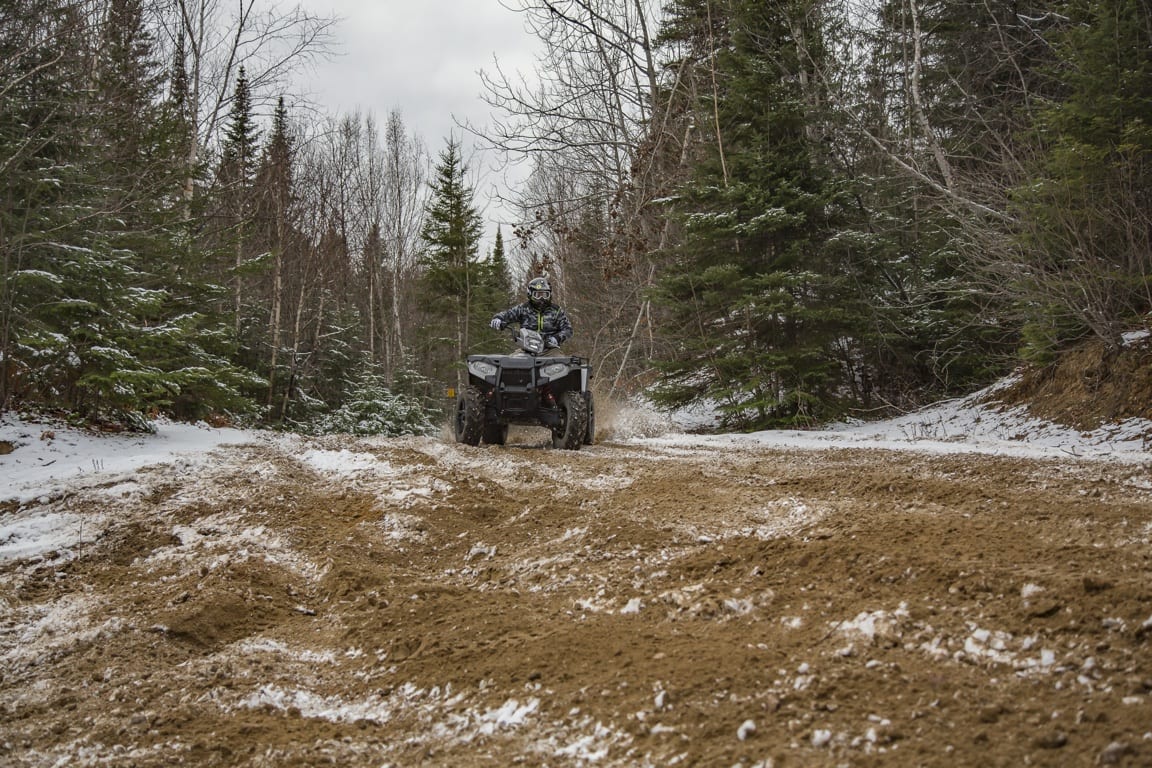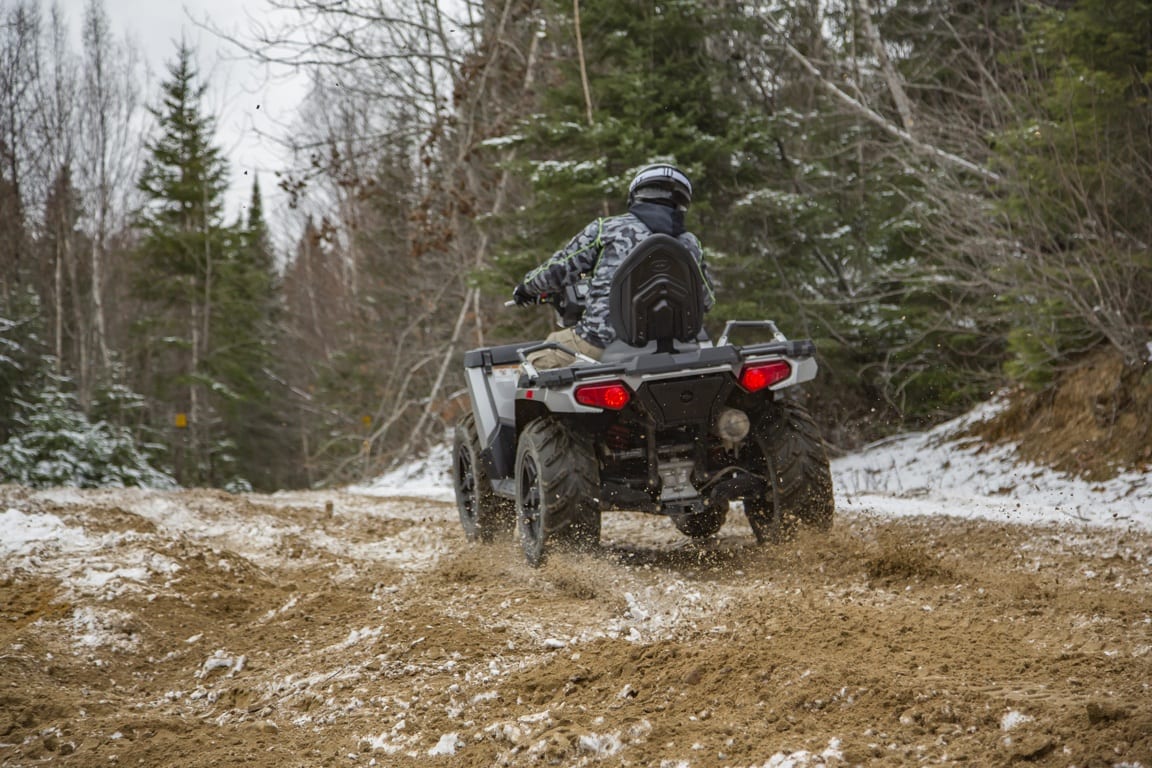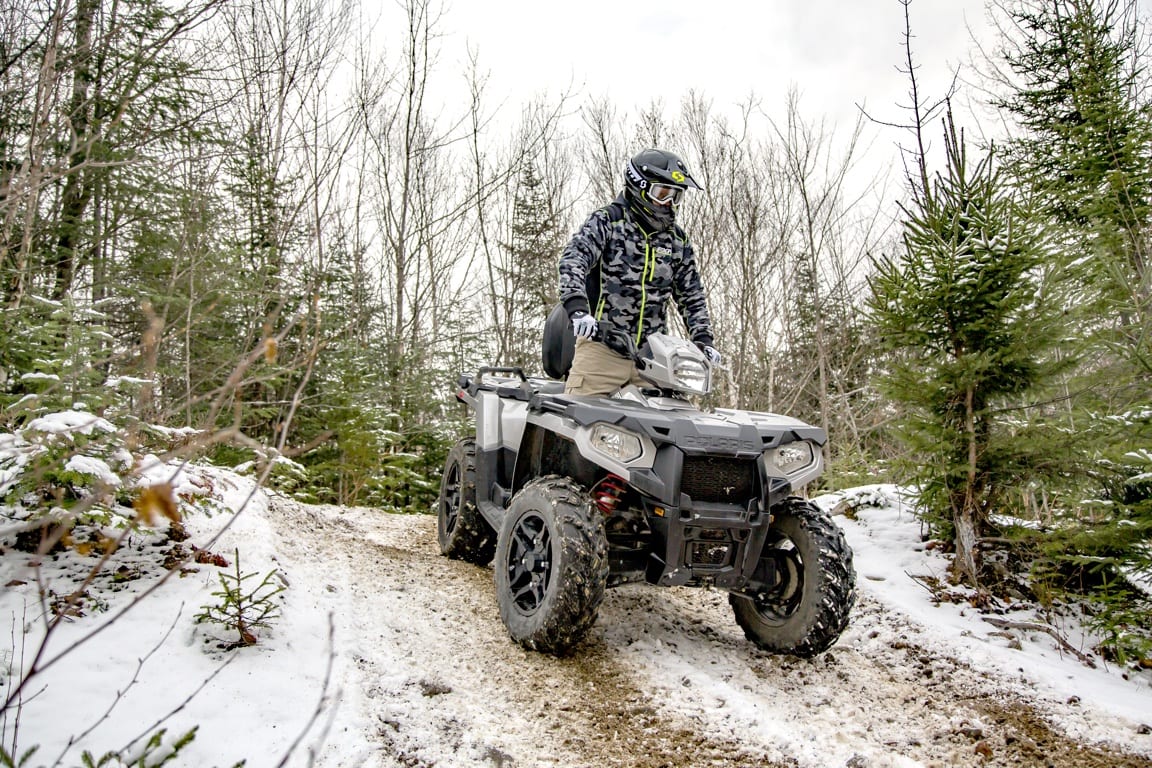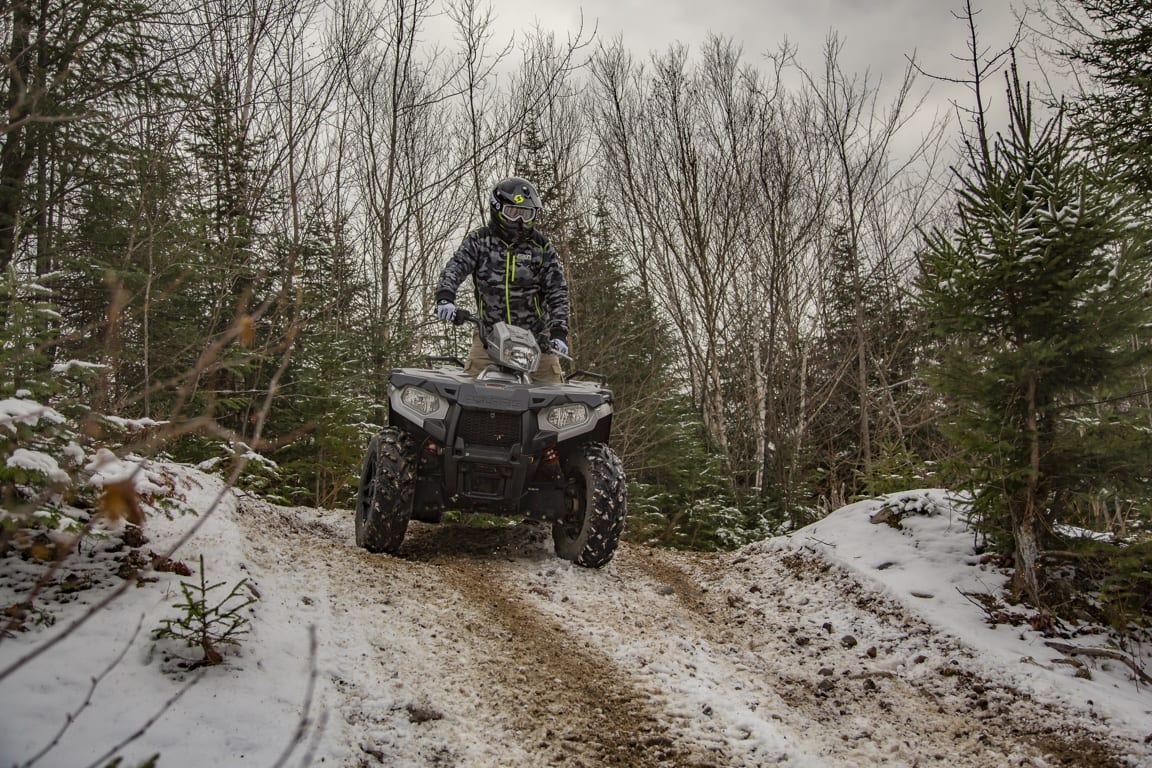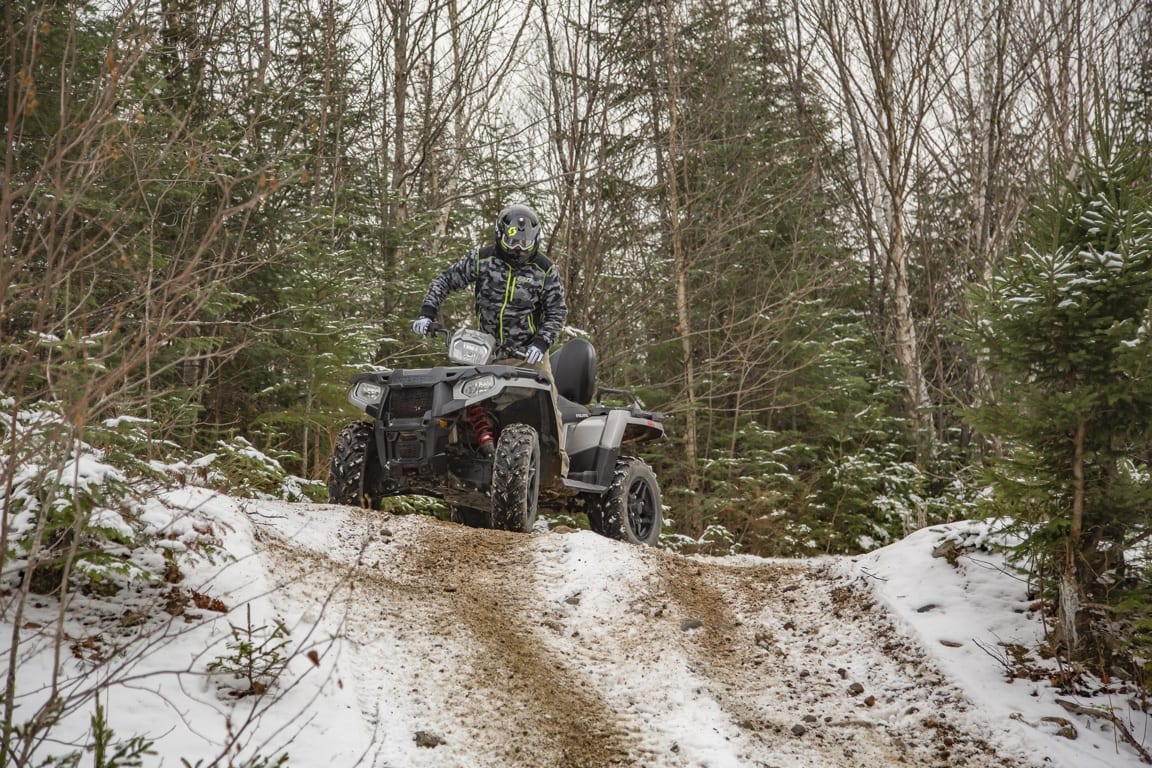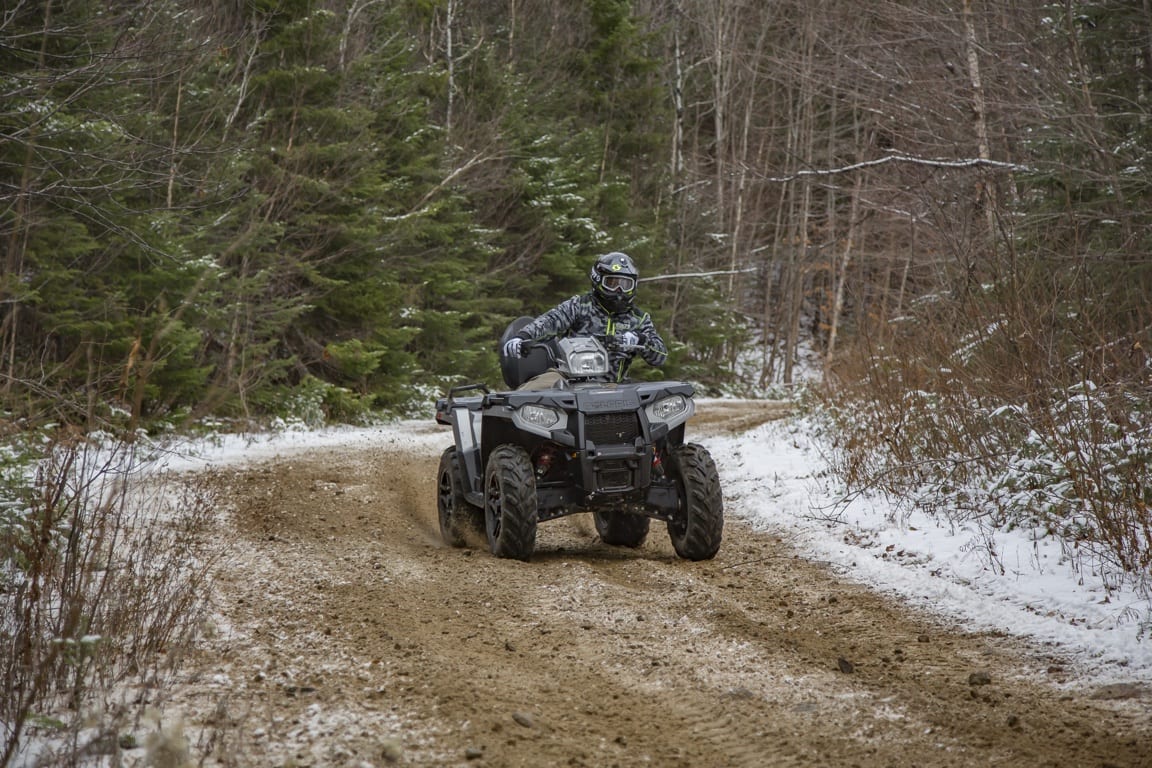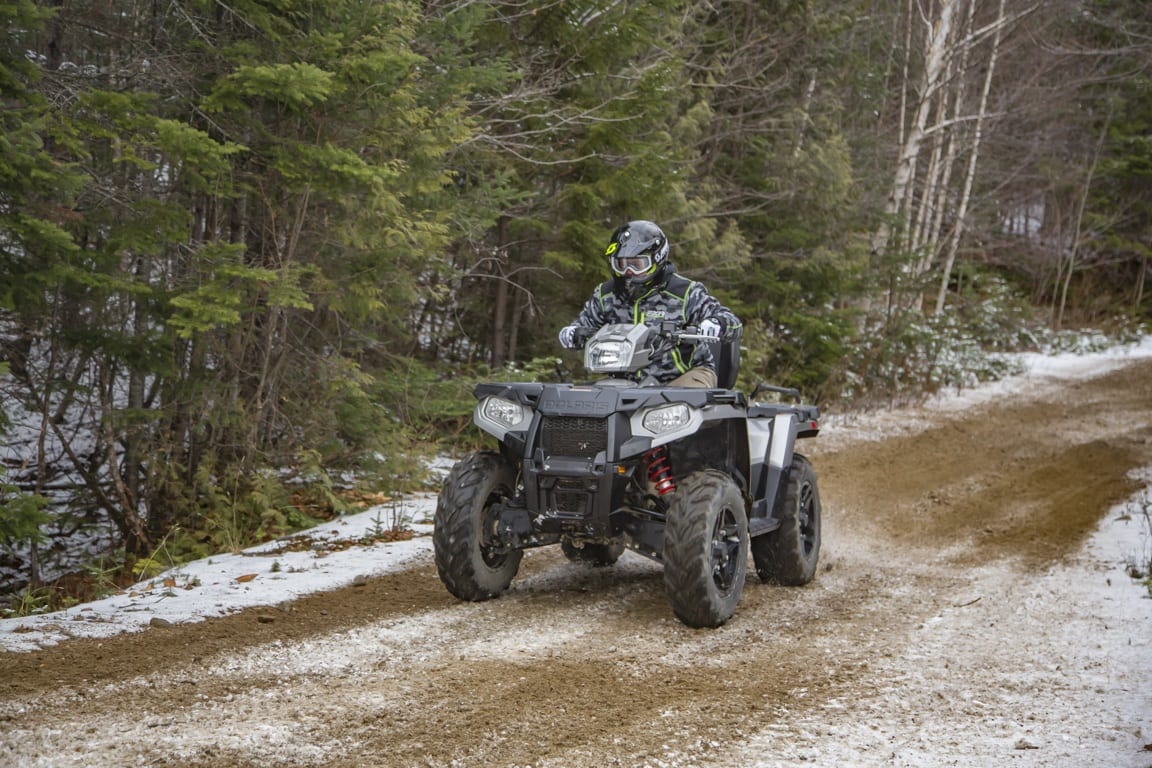The vehicle market is made up of several segments, including the growing market of smaller, two-up models. Several factors explain why this class is gaining in popularity, but it’s easy to see that fuel savings and value for money are only the beginning.
During the summer months, I travelled more than 1,000 kilometres on the Sportsman 570. Although the vehicle was designed primarily for trail riding, I had the opportunity to venture out over very hilly terrain, which allowed me to find out exactly what it could do.
Technical Features
The Sportsman is powered by the 567 cc, 4-stroke, single-cylinder liquid-cooled ProStar engine, which can produce 44 HP. The fuel feed is managed by a double overhead camshaft, including two intake valves and two exhaust valves twinned with electronic fuel injection. A variable PVT (Polaris Variable Transmission) clutch, with two forward gears, reverse, neutral and park, transfers power to the wheels. The vehicle is equipped with an Engine Breaking System (EBS), which allows for engine-assisted braking when the accelerator is released using the Active Descent Control (ADC) on the descent.
The MacPherson strut front suspension, i.e. a coil spring surrounding the shock absorber, is adjustable when compressed through a ring with five positions. The system includes a dual A-arm and stabilizer bar to provide 8.2 in. of clearance. The same style of compression adjustment system can be found at the rear to provide 9.5 in. of clearance.
Four CST tires—26 X 8-14 in front and 26 X 10-14 at the back—keep the vehicle connected with the ground. The SP Turbo Silver version comes with 14-inch cast aluminum wheels. And, to use them properly, the vehicle is equipped with two drive modes—2 X 4 or 4 X 4—to produce a true all-wheel drive.
Our test model is outfitted with variable power steering based on speed. Therefore, a lot of assistance at low speed; the assistance decreases as speed increases.
The payload capacity, which includes passengers and baggage, is 485 lbs., with a towing capacity of 1,200 lbs. Interestingly, ground clearance is 11.5 inches and the wheelbase is 56 inches, which puts the Sportsman within industry standards. The trailer coupling is standard, with a 1.25-inch receptacle.
In terms of storage, the front cargo box provides 23 lbs. of capacity, while the rear cargo box under the seat provides 8 lbs. The front luggage rack capacity is 90 lbs., while the rear can accommodate up to 180 lbs.
Ergonomics
In a trail vehicle class like that of the Sportsman, ergonomics is a critical factor. We can confirm that the vehicle is very ergonomic. The driver’s seat is very comfortable and the foot compartment area sufficiently far forward so that the knees of a tall person are almost at 90 degrees. I did notice one thing that could be improved: The position of the brake pedal is relatively high, which requires raising the foot slightly to reach it. In contrast, it’s easier to access on the Scrambler versions, for example. The passenger’s seat and backrest are above reproach, and the hand holds are solid, with three ways to grip them. The footrests are sufficiently high and well-positioned to create a very comfortable position with a good grip. The backrest was redesigned to provide better lateral support.
Comfort
It’s well-known that the Polaris scores highly for comfort. The Sportsman 570 Touring SP is no exception. The suspension acts remarkably well over small bumps; it’s simply a “Cadillac.” Even if the suspension is flexible at the start of the ride, and it gradually adapts so that the vehicle remains stable in more aggressive turns, always bear in mind that it’s a passenger vehicle. If you push it too hard over the big bumps, it won’t perform like the Scrambler, where the choice of shock absorber is better suited to this type of driving. It handles relatively well on a steep and hilly decline, as the AWD combined with good ground clearance allows it to attack all types of terrain. A minor improvement would be to add protection near the level of the right calf where the driver can feel the heat created by the exhaust pipe at low speed. The problem disappears at higher speeds.
Performance
Although there’s nothing new in this regard, the performance of the 570 is still surprising. The 44 hp produced by the 4-stroke, single cylinder engine are easily handled by the clutch. Acceleration is hesitation-free and very powerful for a 570, even causing some embarrassment on the part of the competition’s 800s. It’s easy to reach 100 km/h on private land, even with a passenger on board!
The SP model is equipped with an Engine Braking System (EBS) and Active Descent Control (ADC), which operate together to provide four-wheel braking. During deceleration, the system works very well and is properly calibrated for linear slowing. On a steeper descent, you’ll have to get used to the ADC, which brakes relatively aggressively. Releasing the accelerator completely during a low-speed descent will slow down the vehicle considerably. As a result, some slight acceleration will be needed to regain speed. In this kind of situation, it’s hard to maintain control without rebounding, which can become a little uncomfortable, especially for the passenger.
The transmission has five modes: park, reverse, neutral and two forward gears, namely high and low. Although switching is relatively easy, it’s can be difficult sometimes to switch to the right mode the first time. The lack of notches on the speed selector means the driver must shift accurately. A design incorporating an exact position for the lever for each option would be a good thing for the future.
With respect to braking, there are three disc brakes—two in front and one at the rear—and two configurations: a lever on the handlebars for the front brakes and a foot brake for the rear. The performance of the braking system is one of the best in the industry without being too aggressive. There’s a beautiful linearity, and bringing the vehicle to a complete standstill is easily achieved during normal trail use.
EPS
Power steering is standard on the Sportsman 570 Touring SP, with assistance varying based on the vehicle’s speed. At low speeds, maximum assistance makes driving enjoyable and easy. At higher speeds, the assistance decreases to reduce the risk of a making a wrong move by increasing the resistance in the handlebars. Well done!
Instrumentation
There’s nothing to note here. The numbers are relatively large, which makes them easy to read. It has a speedometer, trip counter, tachometer, gear indicator, fuel gauge, drive mode, 12-volt socket and high-temperature/low-battery indicators. In short, it has everything!
Without a doubt, the Sportsman Touring 570 is one of my favourites. The performance is simply astonishing and makes it a very enjoyable vehicle. Fuel consumption is very low, so you’ll always be one of the last in the group looking for a pump. A good two-up for trail riding!


